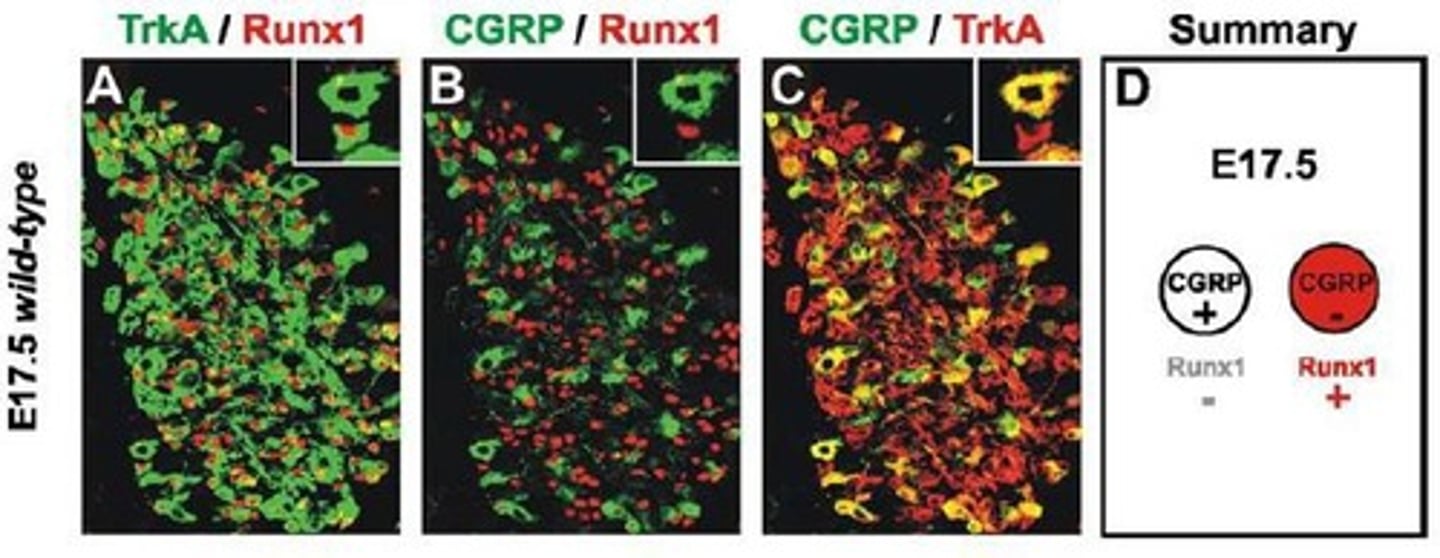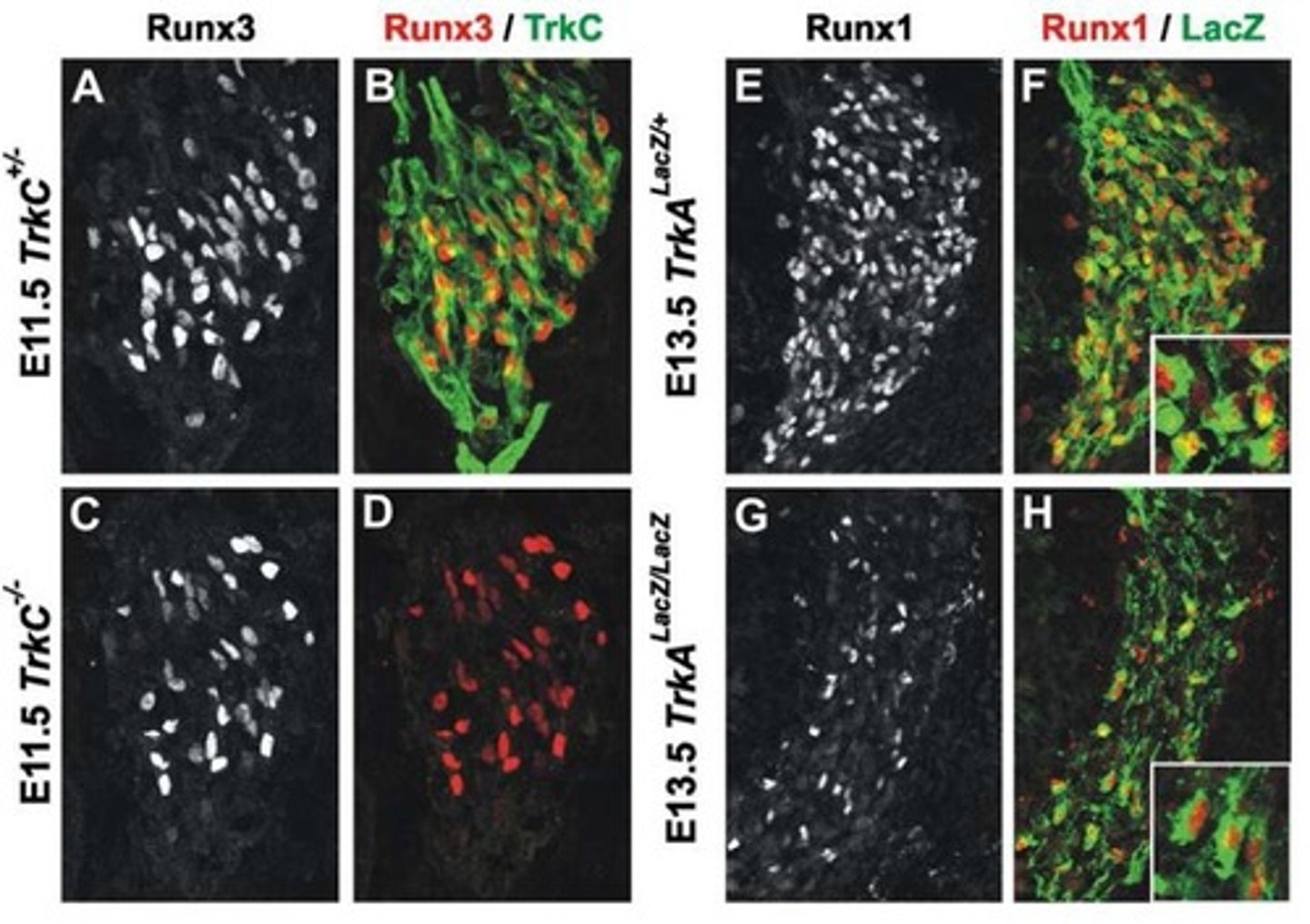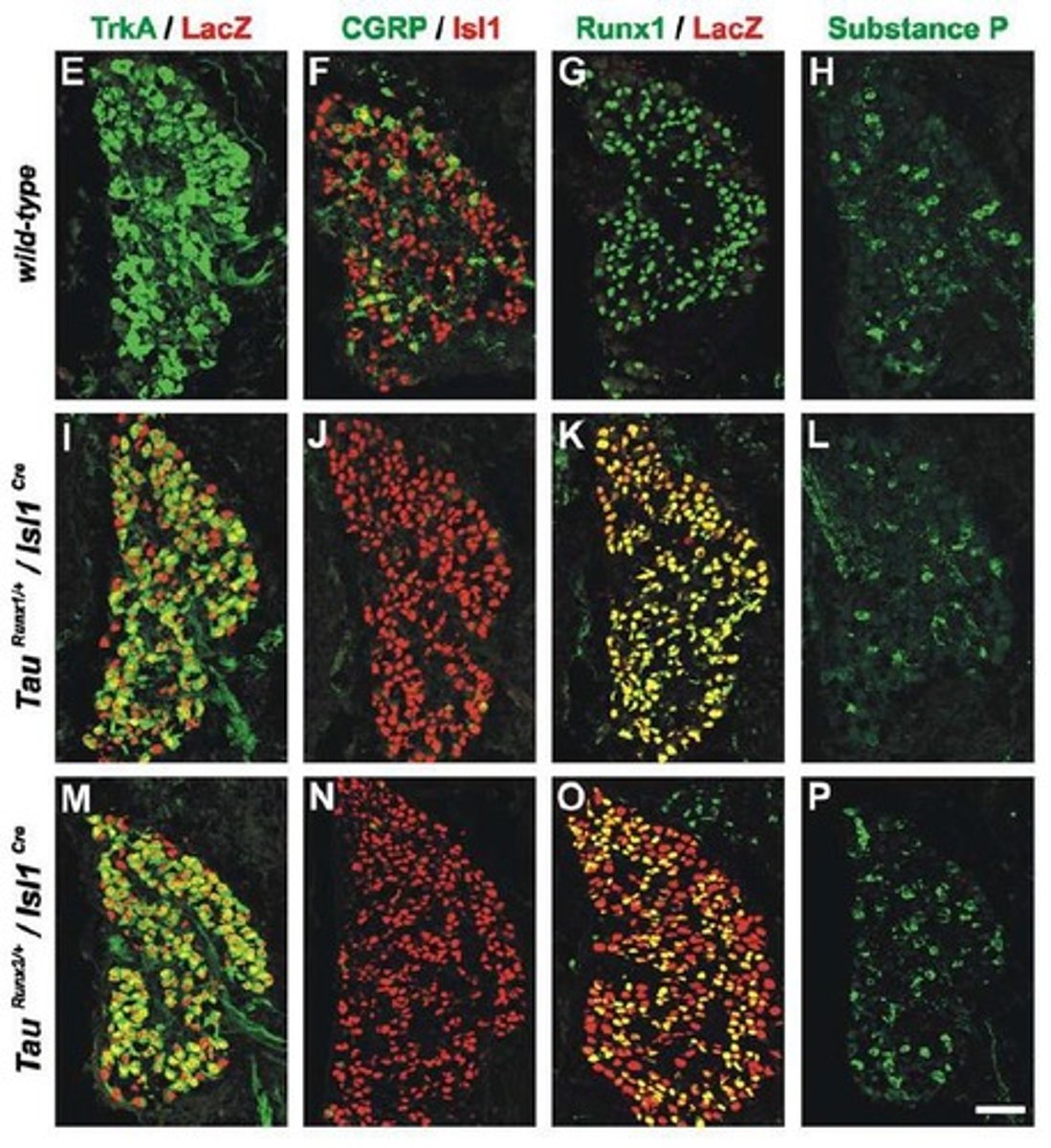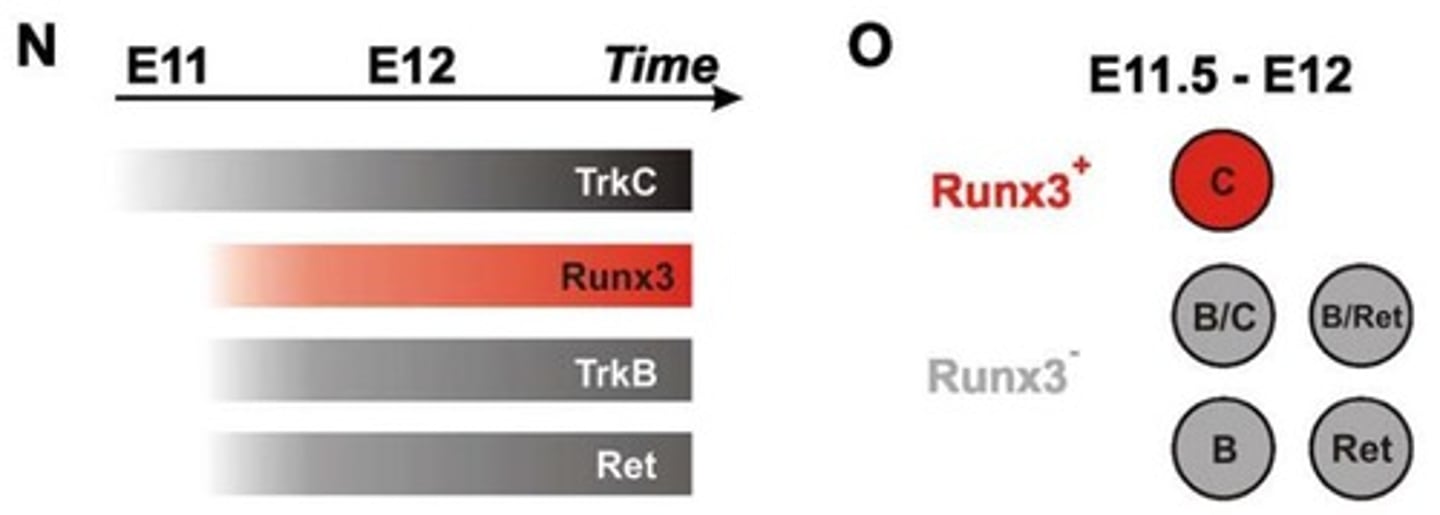Role of Runx Factors in DRG Sensory Neuron Diversification
1/21
There's no tags or description
Looks like no tags are added yet.
Name | Mastery | Learn | Test | Matching | Spaced |
|---|
No study sessions yet.
22 Terms
Dorsal Root Ganglion (DRG)
Cluster of sensory neurons transmitting sensory modalities.

TrkA+ Neurons
Respond to NGF, involved in pain sensation.
TrkB+ Neurons
Respond to BDNF, involved in mechanoreception.
TrkC+ Neurons
Respond to NT-3, involved in proprioception.
Ret+ Neurons
Respond to GDNF, participate in various sensory modalities.
Runx Transcription Factors
Regulate cell fate decisions in neurons.
Runx1
Expressed in TrkA+ neurons, refines nociceptive identity.

Runx3
Expressed in TrkC+ neurons, promotes proprioceptor identity.

Gain-of-function Experiments
Introduce genes to study their effects on neurons.
Loss-of-function Experiments
Remove genes to analyze their role in neurons.
Immunohistochemistry
Technique to label proteins in tissue samples.
Axonal Tracing
Method to track sensory neuron axon projections.
Ngn1
Not required for neurotrophic factor receptor segregation.
Ngn2
Examined for genetic interactions with Runx and Trk.
CGRP Expression
Repressed by Runx1 in TrkA+ DRG neurons.

Fluorescence Imaging
Used for quantifying protein expression in neurons.
Cell Autonomy
Runx3 acts independently to repress TrkB expression.
Molecular Basis of Diversity
Insights into sensory neuron subtype generation.
Proprioceptor Identity
Ensured by Runx3 through TrkC expression.

Nociceptive Neuron Identity
Refined by Runx1 through CGRP repression.
Transcriptional Switches
Runx factors diversify DRG neuron subtypes.
Neurodevelopmental Disorders
Understanding enhanced by studying sensory neuron diversity.